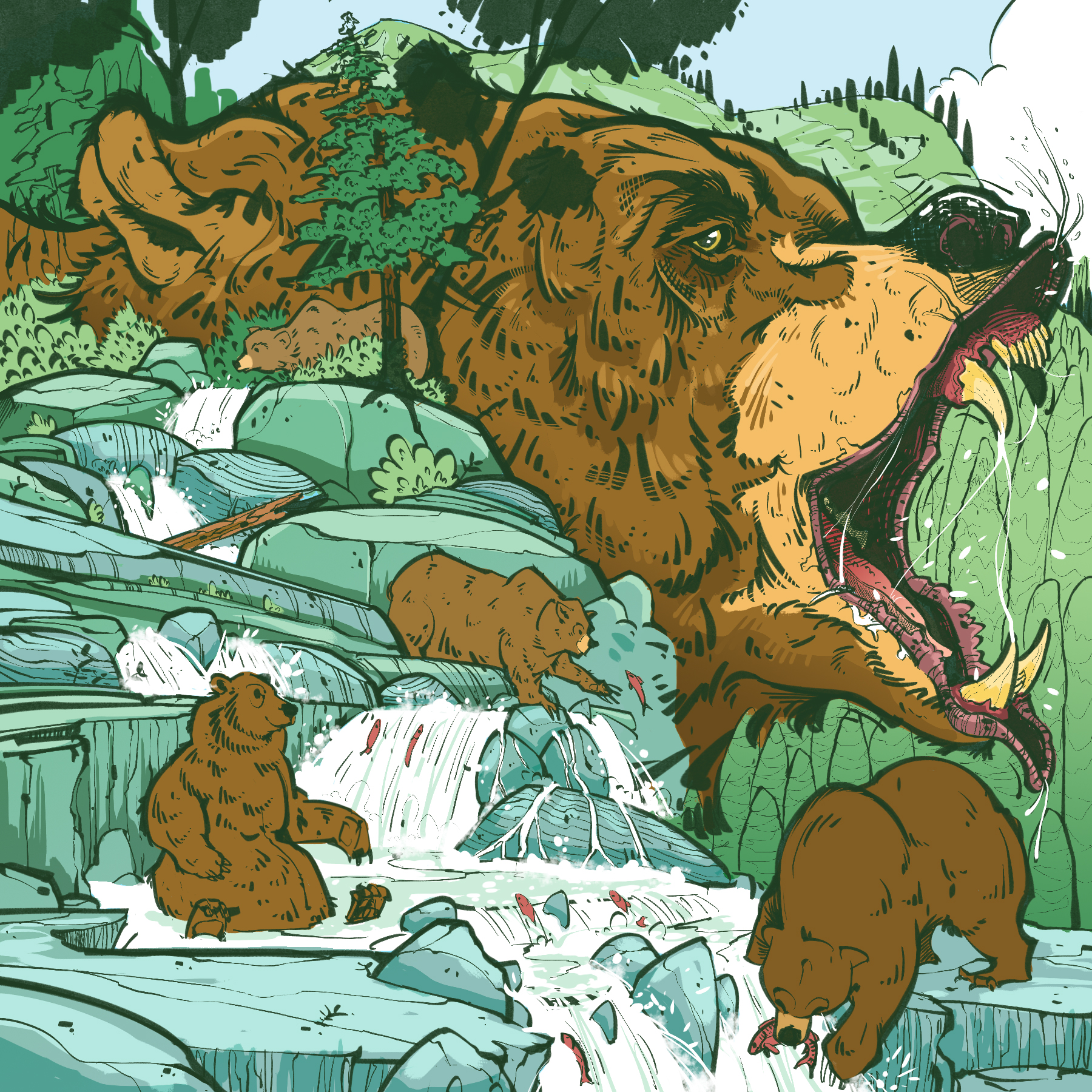For many of us, the name grizzly bear conjures images of rugged mountain and forested wilderness, but also massive strength and danger. These big animals were once found across North America, but they have all but disappeared east of the Rocky Mountains and south of the 49th parallel. The current population estimate is 55,000 grizzly bears, about half are found in Alaska, most of the remainder are in northern Canada. BC is home to about 15,000 grizzlies and they still occupy about 90 per cent of their historic range.
Advertisement

Modern bear species evolved from the Etruscan bear that lived in Eurasia about six million years ago. Brown bears appear in the fossil record about 1.5 million years ago. Some brown bears wandered across the Bering land bridge to North America during an ice age 50,000 to 100,000 years ago, and they are now the most widely distributed bear species in the world.
In BC, there are two species of bears: black bears (Ursus americanus) and brown bears (Ursus arctos). Brown bears are the larger of the two, weighing up to 500 kilograms, but usually about half that size. These are heavy-bodied animals with a short tail, large paws and long, gently curving claws. The outline of their face is usually concave. As the name suggests, the coat colour is a shade of brown, often with a paler-coloured “saddle” on their back. Most have a characteristic shoulder hump. In North America, most brown bears have white, grey or gold tips on their fur that gives them a “grizzled” appearance and thus the common name: grizzly bear. The 1805 Lewis and Clark expedition had frightening encounters with grizzly bears, and that generated a species name, Ursus horribilis. In 1851, grizzly bears were reclassified as a subspecies of brown bears, with the current scientific name (Ursus arctos horribilis) that translates as “horrible northern bear.”
Advertisement
These are big, omnivorous animals with big appetites. A grizzly bear menu list includes any animal it can kill, from moose to mice to ants, as well as vegetation from roots to shoots. These bears are not fussy about food freshness, so they will feast on carrion and rotting fish. Spawning salmon, if available, are prized, as are ripe berries in the fall.
Grizzly bears avoid the lean months of winter by spending as much as seven months asleep in a winter den. Their body temperature stays about the same as when active, but their breathing and heart rate drop dramatically, to only a couple of breaths and heartbeats per minute. This is such a deep sleep that they don’t feel hunger or thirst or the need to eliminate body wastes. Their fluid needs are met by recovering water as they metabolize stored body fat. Metabolic waste products are broken down internally into the constituent minerals and absorbed. Basically, to survive winter, all a grizzly bear needs is air.
Advertisement
In a sow’s winter den, the next generation of bears is born, typically one to four cubs. Mating season is in late spring. These animals are not monogamous, so sows may be carrying fetuses from different fathers; but not all will be born. The fertilized eggs float freely in the sow’s womb through the summer and won’t grow until hibernation. If a sow is sick or starving, these eggs will be absorbed and she is no longer pregnant. If she heads into her winter den in good condition, the eggs implant in the uterus wall, and the cubs are born two months later. This delayed implantation ensures that the sow has sufficient body resources for the demands of pregnancy. The newborn cubs are tiny, blind, hairless and helpless. They immediately find the teats and spend the remainder of the winter suckling, sleeping and growing. The sow may remain asleep the entire time. She and her new family survive the winter solely on the fat she accumulated in the summer. When she emerges from the den in spring, though, she is, as the saying goes, as hungry as a bear.
Grizzly bears, particularly sows with cubs, have a reputation for being dangerous; but in fact, attacks on humans are rare, an average of one per year in BC. However, they are large, powerful and unpredictable animals, and anyone venturing into the backcountry should know how to respond to an encounter with a “grizzled” brown bear. There are a number of good resources online, such as the Get Bear Smart Society website.